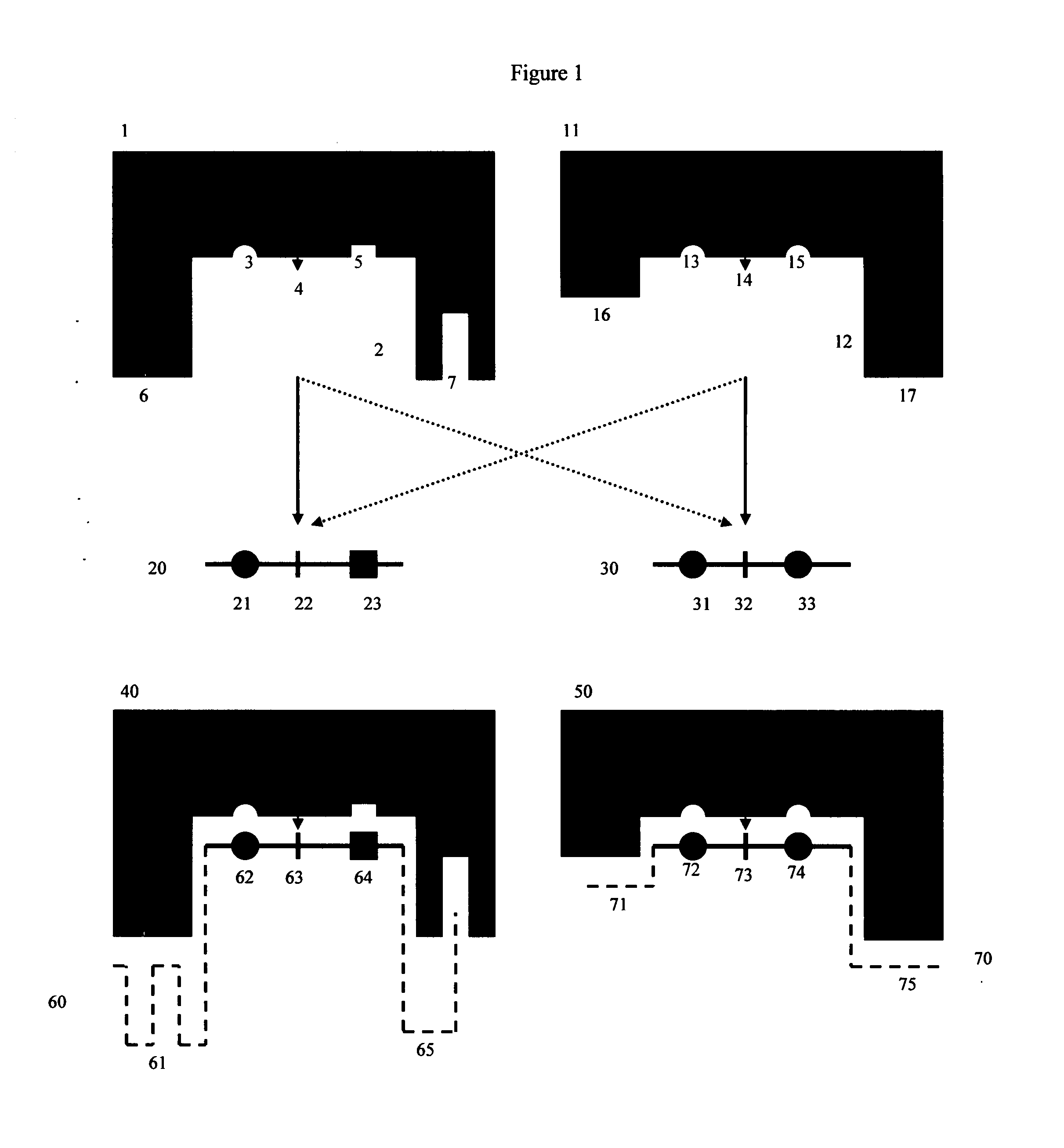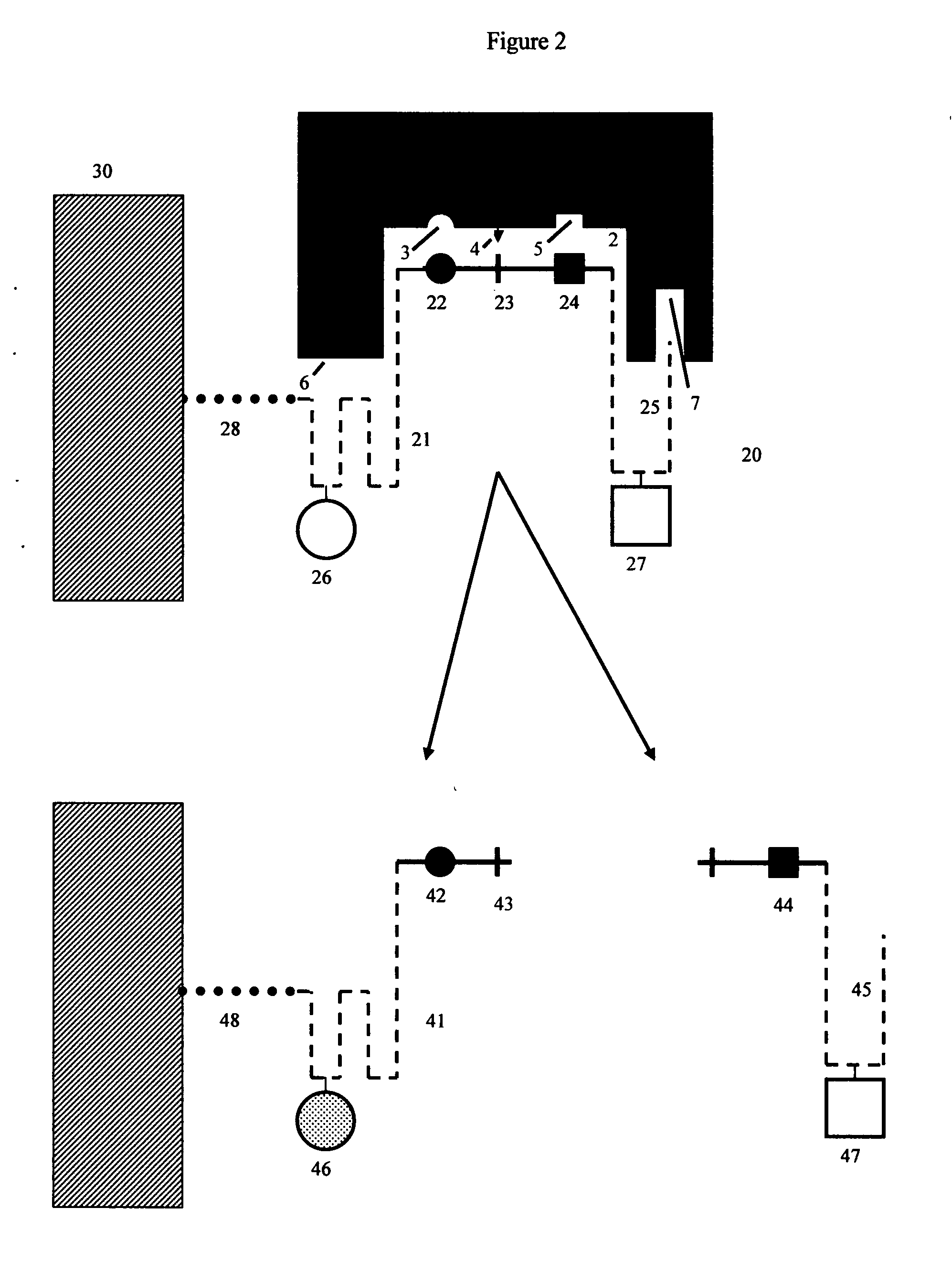Synthetic substrates and inhibitors with enhanced specificity
a technology of specificity and substrate, applied in the field of enhanced specificity, can solve the problems of lack of specificity, confusion of reaction pattern, and prior art proteolytic susceptibility of sr-peptide, and achieve the effect of preserving the susceptibility of sr-peptid
- Summary
- Abstract
- Description
- Claims
- Application Information
AI Technical Summary
Benefits of technology
Problems solved by technology
Method used
Image
Examples
Embodiment Construction
[0081]FIGS. 1 and 2 show a detailed schematic of steric restrictor function using protease (proteolytic) enzymes and protease substrates as an example:
[0082]FIG. 1 shows two different protease enzymes (1, 11) reacting with two different peptide substrate moieties (20, 30). Here protease (1) has an active site (2), which contains amino acid residues (3) and (5) which bind to complementary groups (21, 23) on peptide substrate moiety (20), as well as a site (4) that cleaves a scissile site (22) on peptide substrate moiety (20). Similarly, protease enzyme (11) has an active site (12), which contains amino acid residues (13, 15) that bind to complementary groups (31, 33) on alternate peptide substrate moiety (30). Protease enzyme (11) also has its own site (14) that cleaves a scissile site (32) on alternate peptide substrate moiety (30). Protease (1) also has additional regions (6, 7) that do not participate in the enzymatic reaction with substrate (20) because substrate (20) contains n...
PUM
| Property | Measurement | Unit |
|---|---|---|
| fluorescence | aaaaa | aaaaa |
| luminescence | aaaaa | aaaaa |
| structure | aaaaa | aaaaa |
Abstract
Description
Claims
Application Information
 Login to View More
Login to View More - R&D
- Intellectual Property
- Life Sciences
- Materials
- Tech Scout
- Unparalleled Data Quality
- Higher Quality Content
- 60% Fewer Hallucinations
Browse by: Latest US Patents, China's latest patents, Technical Efficacy Thesaurus, Application Domain, Technology Topic, Popular Technical Reports.
© 2025 PatSnap. All rights reserved.Legal|Privacy policy|Modern Slavery Act Transparency Statement|Sitemap|About US| Contact US: help@patsnap.com



